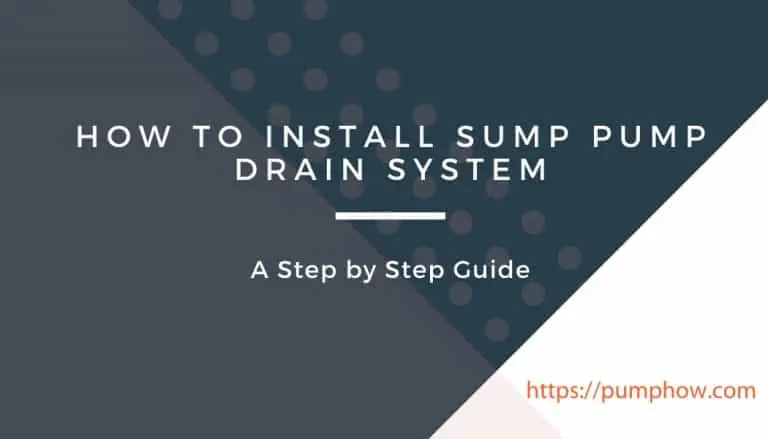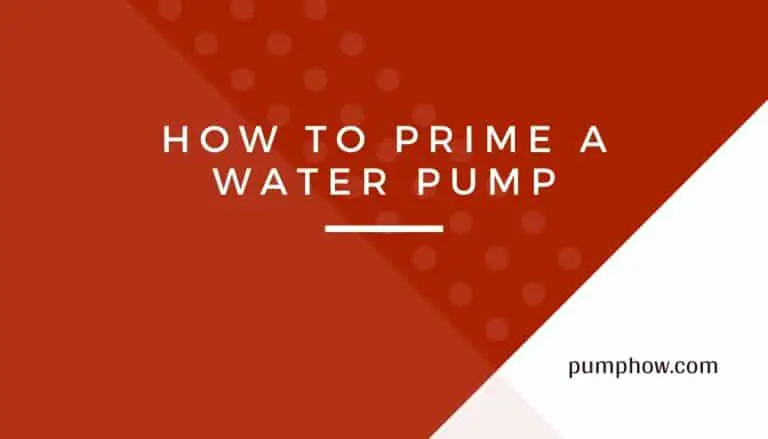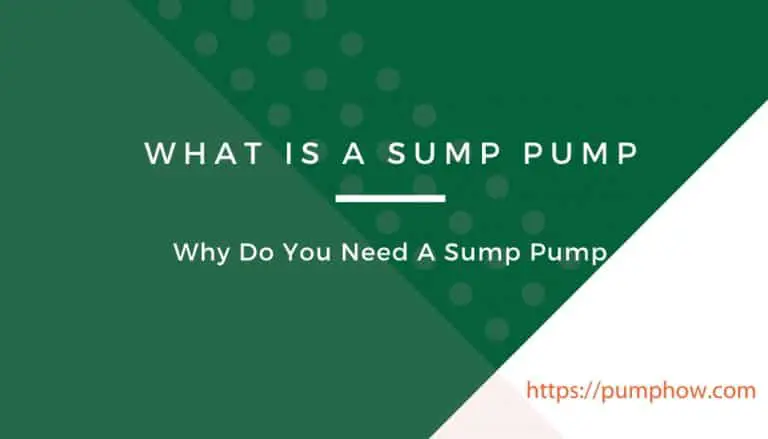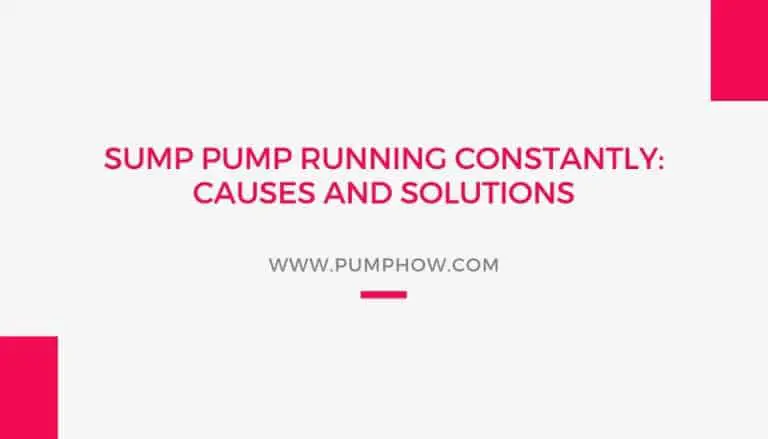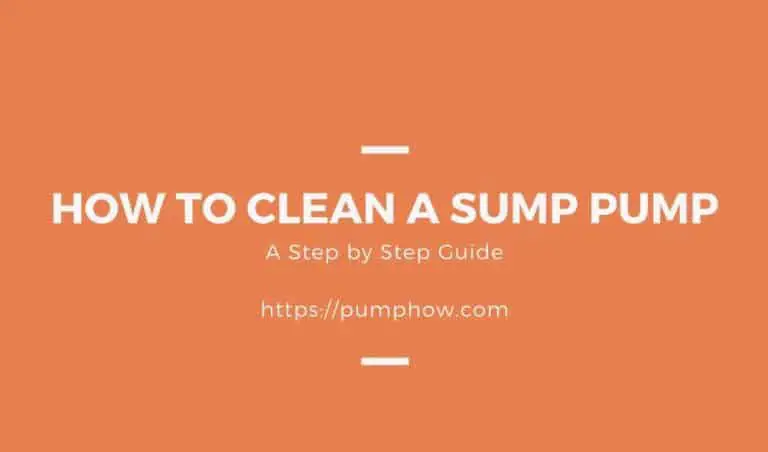Both ejector and sump systems are indispensable to the management of excess and waste water coming from natural sources and household activities. Besides sharing an almost identical look, both of them show another obvious similarity – removing the water your house doesn’t need. Confusions may arise as to the necessity of having one of them or both installed.
Truth is they do quite different things, and thus, there are differences in the way they work and become useful. In this article, we’ll highlight the basics and applications of both pumps so that you don’t have to hesitate while installing them.
Ejector Pump vs Sump Pump in Details
First, we’ll explain how both pumps work and what their failures may cause to your household. Then, we’ll present you with a concise overview of the facts regarding them.
Sump Pump Explained
Contained in a sump basin which is cylindrical in shape, a sump pump sits in the basements or crawl spaces of a home. Small in size, and often kept submersible, the pump’s task is to ensure that those spaces don’t accumulate water during occurrences like flooding, rain, snow, or any kind of precipitation that contributes to an increase in ground water.
The basin is set 2-3 feet deep into the floor and typically includes a couple of inlets that connect to any end of a home’s drain tile system on the exterior or interior part. The drain tile collects water and drives it to the basin where it accumulates. As the level of water gets high enough to trigger the float switch integrated into the sump system, the motor starts. It means the pump gets activated.
Then, the system pumps the accumulated water out of the home basement through the discharge system, all the way out onto the residential lawn, and into the municipal sewer. Any instance of sump pump failure results in an overwhelmed and eventually flooded basement. To handle the risk of failure, modern sump systems accept a backup pump that gets to work once the primary one stops.
Design/Types of Sump Pumps
You may see several varieties, but they really come down to four types, such as submersible, pedestal, battery-backup, and water-powered sumps.
Submersible sumps are often the quietest yet most expensive and powerful (capable of pumping several thousands of gallons each hour) of all pumps. Being completely submerged in a pit, the pump can be hard to access when required. Fortunately, you may not have to do that very often. Having such a pump doesn’t affect the aesthetics of your basement much.
Average life expectancy of these pumps can be up to 10 years. One of their specialties includes the ability to filter out visible debris and stay moderately protected against clogging.
Pedestal sump pumps stay upright with an impeller located at a pedestal base. The motor being integrated above the sump pump doesn’t usually get wet. Less expensive and powerful than submersible pumps, pedestal sumps can be noisier and more vulnerable to overheating and require frequent maintenance.
Water-powered sumps don’t rely on electricity for their operation. They collect water pressure from the municipal’s water source and use that to create a vacuum to suck the volume of water in the sump pit. Without the required water pressure, their functions may be interrupted. When well water is the only source of pressure, these pumps may not work at all.
Unlike submersible or pedestal pumps, these ones perform best only as a backup, and the absence of electricity or a battery in its system results in little to no maintenance. Speaking of the pumping power, this type can handle 2 gallons an hour using the pressure of one gallon of municipal water.
Battery-powered sump pumps are exclusively regarded as a backup when the main (submersible/pedestal) pump can’t run. Another less capable style is a floor sucker that is portable and requires no installations.
Now that we’ve covered the fundamentals of sump pumps, you want to know more about ejector pumps. Well, here it is.
Ejector Pump Explained
A cursory glance at both pumps won’t help you distinguish an ejector pump from a sump. Even, their placements may not be very different as an ejector is often placed in a basin that is installed on the floor. Unlike the basin of a sump system, an ejector’s accumulates the water lying in floor drains, the grey water ejected by a sink, washing machine, or other appliances, and the waste water from a bathroom.
Ejector systems designed to handle waste water comes with a sealed lid on their basins along with vent pipes to process sewer gases. Some ejector pumps are designed to handle only the liquid from drain floors or gray water may have a sealed lid, but you won’t see any vent. Both types require that the discharge pipe remain connected to a home’s sanitary sewer line like most of the residential plumbing fixtures.
Events like basement toilet flushing or water rolling down the sink are enough to trigger an ejector pump. When an ejector system fails, you may experience some flooding with the water volume being smaller than what you would see after a sump’s failure. However, health safety becomes the most critical concern because whatever you’ll have in the event of a failure is either dirty and unsafe water or raw sewage.
Designs/Types of Ejector Pumps
Among the different variations, three types are more frequently in use than the others. They’re submersible, self-priming, and vertical ejector pumps.
Submersible ejectors are more popular than the two other types. There’re two variations, such as single-seal and double-mechanical-seal submersible ejector pumps. Single-seal pumps cost less than the double-seal ones and are ideal for households that require a pump to run no more than 3-4 times a day.
More frequency of uses calls for a double-seal type which serves more reliably. It’s good to have an ejector pump that includes a rail-type removal mechanism because this system proves to be more efficient in handling troublesome sewage situations than the ones without a rail system. Also, an ideal pump uses a non-clog impeller that can handle regular toilet wastes.
Vertical pumps are costlier, larger, and more durable than submersibles. The pumping side of the system rests in the pit with the motor being on a plate, a component that supports the shaft, volume, and the discharge pipe too.
Vertical ejector pumps may come with more than a few sleeve bearings along their shafts, which need to be lubricated with grease at least once in 3-4 months depending on the frequency of use. You can’t expect continuous duty from a vertical pump due to the sleeve bearings which permit only intermittent operation.
Self-priming pumps along with their motors stay on top of pits and get completely primed as they’re full of water. If a self-priming ejector is primed, it remains that way for years until air interferes with its casing. These pumps are accessible and suitable if you can only have a shallow pit and little headroom.
Ejector Pump vs. Sump Pump: Which One Is More Sensitive?
A sump pump prevents flood or rain water from flowing into a basement. The water can be useless but not necessarily what we call waste water. An ejector pump works to handle water that’s both useless and waste, not to mention harmful. The ejected water may also be any sewage from a basement bathroom.
Sump systems handle liquid coming from external sources while ejectors manage what has been used inside a home and needs to be out. Whether you wash anything or use water while in the bathroom, an ejector, if installed in your home, starts working.
Sump pumps use only one drain pipe to direct water outside of your home. On the contrary, ejector pumps use one direct line to a home’s sewer or septic tank and one vent pipe to expel dangerous sewer gases directly to the outside.
When both systems malfunction or don’t work at all, it’s the ejector pump that should be taken care of first because raw sewage is likely to keep coming in volume. However, you can’t show indifference to the sump system as well.
Who to Call When You Can’t Do It Yourself?
Regardless of the technicality both systems involve, some homeowners seem to have the right amount of experience and knowledge to take up a DIY installation, repair, or replacement project. What if you don’t see it right for yourself?
For an ejector pump, a certified plumber is your guy. Some of these professionals can lend an expert hand in the sump system as well, but you should find a contractor who specializes in basement waterproofing.
Selections of ejector pumps may not come in as wide a range as those of sumps. But a good plumber can recommend more than a few choices to help you get exactly what your home requires.
Again, you can take care of a sump system with simple efforts which may not be good enough for an ejector pump. After having an ejector pump, you should seek professional assistance unless you’re quite certain of your capability. That’s where ejector pumps command greater sensitivity than sumps.
Ejector Pump vs. Sump Pump: A Further Look at Usability
Knowing that both pumps are essential to a household setup is sufficient for homeowners. However, people who have other establishments to take care of may want to know about the variety of applications these pumps are capable of.
Uses of Sump Pumps
- Submersible pumps are loved by contractors who need to ensure that the fields they’re going to work on don’t have excessive water underneath the ground.
- Buildings and farms located in places where the water table remains high benefits from these pumps.
Uses of Ejector Pumps
- Ship-building projects often require one for evacuating a suction line included in some centrifugal pumps, especially the non-self-priming types.
- Chemical industries rely on an ejector pump for conveying liquids indirectly and lowering suction pressure.
- Steam engines that have boilers use the pumps to refill water efficiently in the boilers.
- Paper mills often use ejector pumps to ensure overall uniformity in processes like temperature distribution and steam circulation.
- Some aircraft engines use the pumps as their main fuel feed pumps.
- Plants that treat waste water need this type for de-acidification and disinfection processes of portable water and water aeration.
- Industries involved in oil processing, textile, gas cleaning, and fertilizer production sometimes use this pump as part of their core operations.
At this point in our discussion, we’ll talk about the cost, maintenance, and lifespan. Sump systems cost a little higher than ejectors with the latter requiring more rigorous upkeep activities. Both pumps stay close to each other when durability is in question.
Final Words
Let us state one more thing. The topic, “ejector pump vs. sump pump” doesn’t make what you know of a contrasting picture. It’s safer to say we’ve tried to give you a comparative view of both pump systems.
Hopefully, the above discussion has helped you. Don’t hesitate to let us know if you need additional information on this particular subject.

